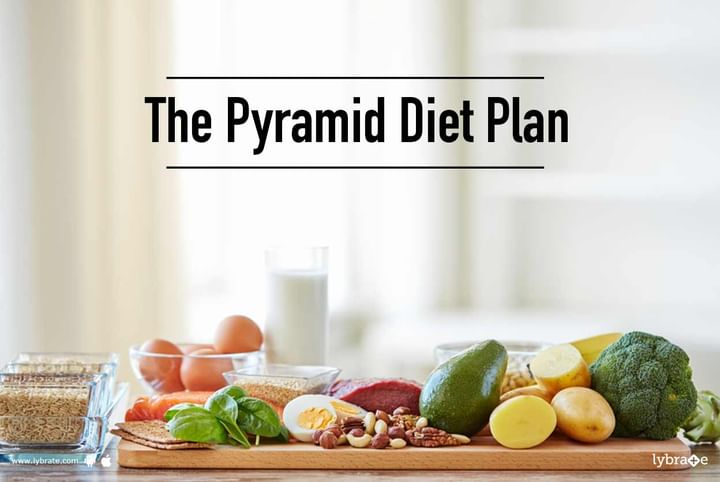The Pyramid Diet Plan
The pyramid diet was conceptualised in 1992 and it emphasises the best amount of servings to be consumed daily from the basic food groups (dairy, fruits and vegetables, grains, beans and legumes, meat, oils and fats).
The pyramid is divided into four levels. The very first level is comprised of grains, beans and legumes; the level above it is made up of fruits and vegetable; the third level from the top is composed of meat and dairy products and the very last one on top contains fats, sugars and oils.
The diet aims to divide the food groups in the above mentioned fashion to make you understand just how much to consume from each food group. Here is a breakdown of servings from each food group:
- Grains- 5 to 7 servings
- Fruits and vegetables- 2 servings of each
- Milk and dairy- 3 servings of which 1/2 serving should be dairy products
- Oils, sugar and fats- 6 teaspoons for oils and minimal servings for fats and sugars
This seems relatively easy to follow, but most people do not understand portion control. The amount or serving of food is called portion control and it is important if you want your diet to work. Here is a guideline that you can follow:
- When you are consuming one serving of grains in one sitting, you can choose to eat one cup of cereals or one slice of whole-wheat bread.
- When you are eating vegetable or fruits with your breakfast or lunch, choose one and a half cup of chopped vegetables, or one piece of orange, banana or apple.
- If you are drinking milk, then one cup of milk in one serving. And, if you are eating meat, choose one ounce of cooked fish or chicken.
- Lastly, do not go beyond one teaspoon of vegetable oil and try to keep your sugar intake to the minimum throughout the day.
The pyramid is an excellent guide to lose some weight. You just need some concentration and a ton of commitment to stick to the guide. Along with the diet, don't forget to get some exercise. If you wish to discuss about any specific problem, you can consult a dietitian-nutritionist.



+1.svg)
